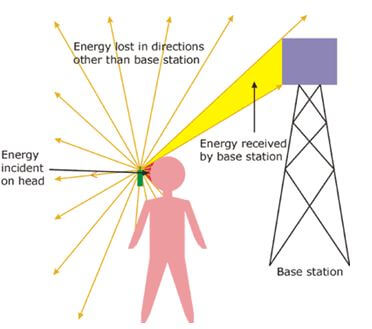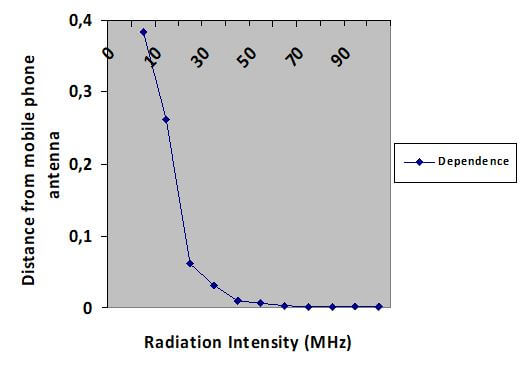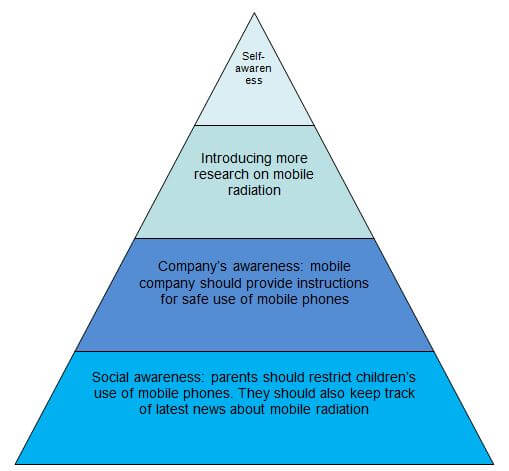Background
The introduction of mobile phones has contributed to significant shifts in social sphere. This device has become an integral component of modern life because people all over the world consider mobile communication the core of social interaction. However, the negative consequences of mobile phones for human health have been poorly investigated and, therefore, few people are aware of the actual threats of using handsets.
In particular, a number of recently conducted studies put forward evidence concerning the negative effects of radiation that is emitted by phones. These emissions are considered to be the main reason for cancer, specifically brain glioma.
Though the presented consideration about cancer does not have solid grounds, the adverse effects of using mobile phones are still evident in terms of connection between health problems and radiofrequency emissions. In this respect, an in-depth analysis of these controversial issues will define if the examined problem is serious. The presentation of studies supporting and withdrawing the claims will outline the existence of the identified connections.
Research Studies on Radiofrequency Emission
A number of researchers have supported the idea that mobile radiation threats have been intensified recently. Though few researches dedicated to the connection between radiofrequency emission and cancer occurrence withdraw the danger of using mobile phones, many studies provide a solid ground for justifying the potential threat of using handsets.
Specifically, the experimental studies provided by Noor et al. (2011) explore the effect of amino acids and neurotransmitters in the brains of young and adult albino rats during 1-hour exposure to mobile radiation. Interestingly, the results have demonstrated an increased level of inhibitory and excitatory amino acids in the brains of albino rats after 1-hour radiation exposure. Consequently, the research reports the existence of negative effects of using mobile phones.
Similar to Noor et al. (2011), Levis et al. (2011) have also highlighted the adverse outcomes of mobile radiation for human health. In their studies, the scholars claim that significant increase of mobile communication level has triggered the concern with the influence of emission on the emergence of head tumors. Specifically, a direct connection has been revealed between the benign and malign brain tumors, and use of cellular phones.
Despite the above-presented concerns, numerous researches have proved that there is no potential risk of cancer, as well as other health problems connected to mobile phone use. In this respect, the research performed by Cardis (2010) has revealed insufficient evidence supporting the connection between cancer emergence and mobile radiation. Though the studies do not provide sufficient evidence for causal interpretation of the problem, there are some biases and ambiguities that need to be further investigated.
Potential Problems of Using Phones
Problems with Sleeping and Headaches
Greater Complication Connected with Falling into Deeper Stages of Sleeping
According to the research studies conducted by the World Health Organization (2011), radiofrequency emissions have an adverse effect on cognitive function and sleep problems as a result of tissue heating. Importantly, the problems with sleeping can become more serious in cases where cellular phones will be used with greater frequency. Keeping phones near faces can cause significant stress to human health and prevent it from normal functioning.
Holding Phones near Beds Causing Headaches
The research provided by Chauman (n. d.) presents sufficient evidence of emerging headaches as a result of long-termed use of cell phones. In fact, the handset use has non-thermal effects that create serious reasons for concerns.
The scholar has discovered that “some people feel headache after talking too long and some hypersensitive people feel sick when the cell phone is turned on” (Chauman, n. d. p. 7). Judging from the above, the non-thermal affects are explained by the mechanism vibrations damaging the nerving system of people. The cause is temporary because the effect disappears as soon as the stimulus is gone.
The close interaction between head and mobile phones has serious consequences for the biological processes within a human organism. The headache problem, therefore, can be explained by the fact that “an electromagnetic field influences the biological functions of nerve cells and induces changes in neurotransmitter contents” (Noor et al., 2011, p. 729). Therefore, it is evident that a mobile radiation has a potential influence on human health.
Tissue Heating
Influencing skin surface processes
The World Health Organization has reported that tissue heating is the main outcome of interaction between the human body and the radiofrequency emission. Due to the fact most of the emissions are absorbed by superficial tissues, the human organism, particularly the human brain, can undergo temperature rise (The World Health Organization, 2011).
Thermal effects, therefore, can lead to brain electrical activity disorders, as well as blood pressure problems. Risk of tissue heating is increased at high exposure levels of radiofrequency. From a scientific point of view, tissue heating and thermal effects are connected with non-ionizing radiation.
Impact on brain processes
According to Chauman (n. d.), that radiation emission “…absorbed by a human head concentrates on one very small area in the brain so as to form a “hot-sport” then a small volume of brain may be overheated and damaged” (p. 7). Though the thermal influence of cell phones on human health is negligible, further investigations must take place.
Greater probability of brain tumors
Many researchers have been dedicated to exploring the connection between mobile radiation and the emergence of brain tumors. Though no direct evidence has been found on the issue, the presented biases and ambiguities still provide a ground for further researchers.
While relying on the studies provided by The World Health Organization, Dellorto (2011) continues analyzing possible carcinogenic hazards caused by mobile phone use. Specifically, the reporter has found evidence that mobile phone users are more likely to have acoustic neuroma brain cancer, or glioma. Nevertheless, other types of tumors are still under analysis. The picture below exemplifies the interaction of radiation and health problems.

In addition to the above presented considerations, the level of cancer emergence is also explained by the increased level of radiation that can be caused by the rapid expansion of mobile communication (Chauman, n. d.). Due to the fact that phones contain toxic substances, the devices constitute serious problems for humans in particular and environment in general. In addition, the intensity of impact of mobile radiation directly depends on the distance between the radio wave receiver and telephone radio station (See Figure 1).

Greater Impact of Mobile Radiation on Children
It has been discovered that children are less resistant to the adverse effects imposed by mobile radiation. Therefore, the long-term effects of handsets use on children have been revealed radio waves can penetrate much deeper into the cerebrum of young adults and children because their skulls are much thinner (Dellorto, 2011, p. 2). Additionally, the World Health Organization (2011) also investigates other potential effects of mobile radiation on children.
Possible Solutions
Before introducing possible solutions to the problem, it is purposeful to outline the mechanism of introduction of those interventions. Figure 2 identifies the priorities and provides a full picture of solutions that will be further elaborated.

Following Carefully Precaution Measures
Holding phones far from bed; not using phones as alarm devices
It is purposeful to keep mobile phones away from beds while sleeping because mobile radiation can be emitted even if the mobile telephones do not transmit radio waves. In addition, alarm devices should also be avoided because they can cause headaches and other disturbances or biological orders. The phones should not be kept close while communicating with other people. The device should be at a 1-inch distance from head. Such a strategy can significantly minimize the risk of radiation impact.
Turning off the phones while sleeping to eliminate radiofrequency emission
The best solution for reducing radiofrequency emission is turning off the phones while sleeping or on any other possible occasion. Despite the simplicity of the presented solution, it can still contribute to reducing radiation exposures influencing brain activities. Importantly, even the turned off mobile phone should not be kept near the body, but in bags, or specialized mobile holders established far away from a person.
Reduce the Frequency and Length of Calls
It has been discovered that people communicating via mobile phones more than 30 minutes per day have increased risk of associated brain disorders. More importantly, these people are more like to have brain tumors. In order eliminate this problem, the time length, as well as frequency of calls, should be reduced.
In addition, wireless handsets are not advisable to use in public because mobile communication can also influence other people. It should also be noted that people should mind the distance of mobile antenna because the intensity of radiation should also influence the frequency of mobile phone use.
In order to minimize the effect of radiofrequency emission, scientists and engineers should work on the development of more effective wireless technologies causing less harm to human health (Chauman, n. d.).
Pay Closer Attention to Children Using Mobile Phones
Choosing simplest models of mobile phones for children – mobile phones should be used for making calls, but not for playing video games. Parents should be careful while purchasing mobile phones for their children. They should ignore multi-functional smart phones because they contain a number of options and games that can engage children using mobile phone for other purposes other than calling. In this respect, choosing the simplest models will eliminate the negative influence on children’s health.
In response to the given problems, the mobile phone producers should pay careful attention to computer design of handsets (Chauman, n. d.). At this point, radio channel modulation should be presented in software for creating the possibility to use less energy and increase functionality. What is more important, such a design can reduce impact on environment and human health.
Parents should not allow children use phones when they are together. Parents’ responsibility for their children’s future is crucial and, therefore, they should establish educational and behavioral patterns for children while spending time together. In particular, they can introduce taboos on using phones while being at home, or while celebrating specific events. The presented norms can significantly decrease radiation threats and improve children’s discipline.
Conclusion
The proposed solutions to the problems should be outlined in the form of a hierarchy where a priority should be given to reconstructing social awareness of people. Society should recognize the problem and identify the actual threats of frequency radiation to health. As soon as people understand the seriousness of the problem, they trigger a mechanism of company’s activities.
Specifically, mobile company should respond to social unrest and provide precaution measures for using mobile handsets. To introduce preventing activities, scientific research is needed to direct the resources and introduce the corresponding solutions. In such a manner, a personal awareness will be increased for the purpose of exterminating the potential threats of mobile radiation in future. The research practice, therefore, should be oriented on the analysis of brain tumor statistics and its relation to increase of mobile phones use.
Self awareness, which is the highest point of the presented hierarchy, is the final step to realizing the problem. Thus, Figure 2 shows the interdependency of the above-presented factors influencing the problem solving in the sphere of mobile technologies. It also outlines the importance of recognizing each of the factors.
Recommendations
Overall, the hierarchy is aimed at projecting the scheme within which the proposed solutions are possible to accomplish. Specifically, a person should realize in what way frequency radiation influences his/her health and understand which methods are the most effective for overcoming the threats.
Lack of evidence on radiation is threat, therefore, can be explained by insufficient research in the field and mobile companies’ ignorance of the existing problems for the benefits of their performance and profitability. In this respect, it is highly recommended to introduce an in-depth analysis of existing evidence and research the fields that have not been sufficiently studied yet.
Reference List
Cardis, E. (2010). Brain Tumour Risk in Relation to Mobile Telephone Use: Result of the Interphone International Case – Control Study. International Journal of Epidemiology, 39(3), 675-694.
Chauman S. Environmental and Health Hazards of Mobile Devices and Wireless Communication. Mobile Computer System. Web.
Dellorto, D. (2011). WHO: Cell phone use can increase possible cancer risk. Web.
Levis, A., Minicuci, N., Ricci, P., Gennaro, V., & Garbisa, S. (2011). Mobile phones and head tumours. The discrepancies in cause-effect relationships in the epidemiological studies – how do they arise?. Environmental Health: A Global Access Science Source, 1059.
Mobile Radiation and Health. [Graphic Illustration, 2011]. Data Access from Walden University. Web.
Noor, N., Mohammed, H., Ahmed, N., & Radwan, N. (2011). Variations in amino acid neurotransmitters in some brain areas of adult and young male albino rats due to exposure to mobile phone radiation. European Review For Medical And Pharmacological Sciences, 15(7), 729-742.
The World Health Organization (2011) Electromagnetic Fields and Public Health: Mobile Phones. Web.